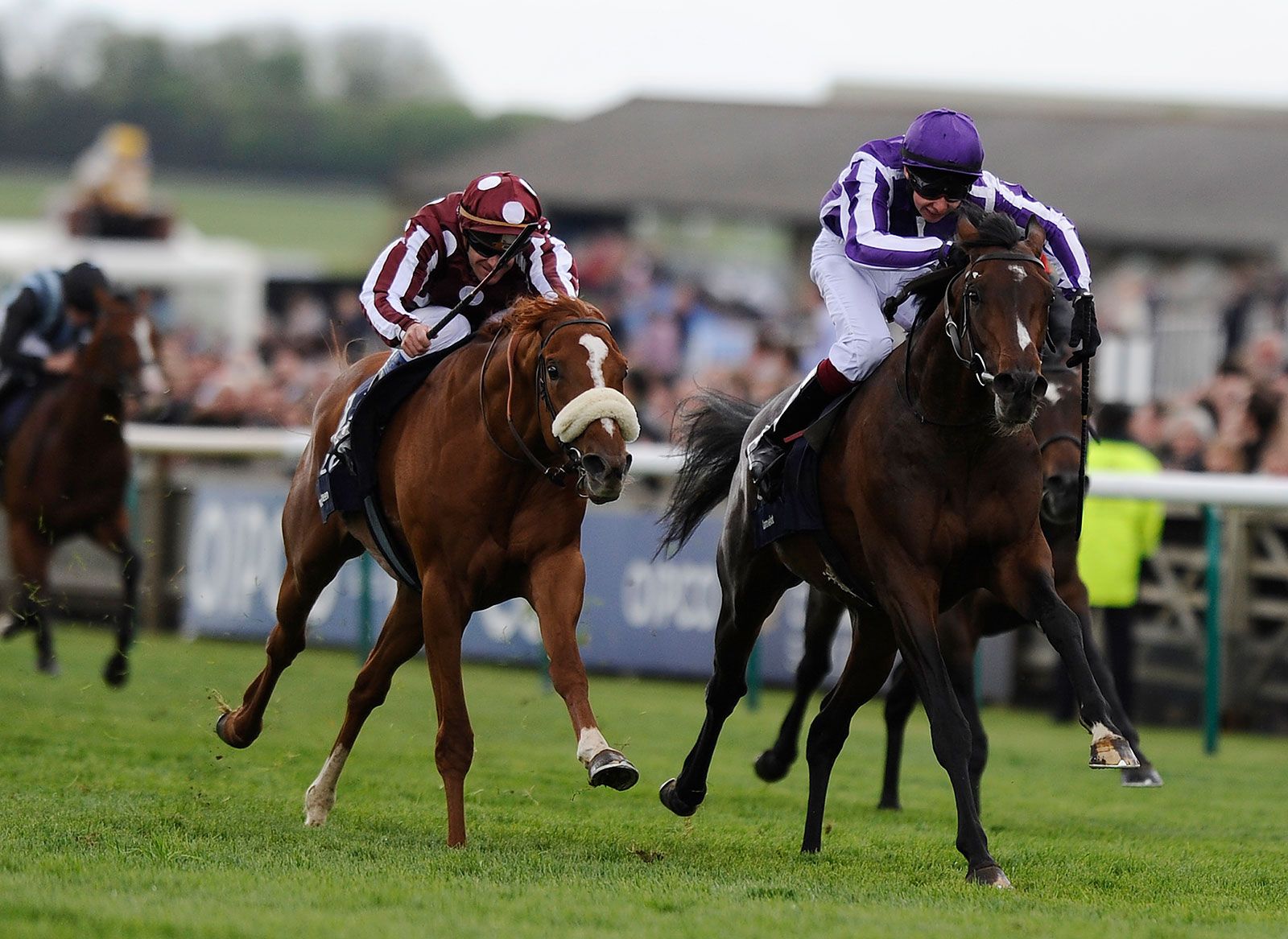Thoroughbred horse racing

Welcome to palisademiranda.com.au, your official source for horse racing results, mobile racing data, statistics as well as all other horse racing and thoroughbred. The Thoroughbred is a horse breed developed for horse racing. Although the word thoroughbred is sometimes used to refer to any breed of purebred horse. Although some of the most prestigious races are confined to three-year-olds, generally Flat racehorses tend to be at their peak aged four or five. Jumps horses. Grafting for success: Japan-bound Tadhg O'Shea reflects on amazing Dubai World Cup triumph with Laurel River · 'You will never see anything like thoroughbred horse racing again' –.
Breaking News: An In-depth Look into Thoroughbred Horse Racing
With the thundering hooves, the spirit of competition, and the thrill of victory, thoroughbred horse racing stands as a timeless tradition that captures the hearts of millions worldwide. In recent races, the equine athletes have catapulted into the spotlight, showcasing their speed, agility, and raw determination on the tracks.
Thoroughbred horse racing isn't just a sport; it's a mesmerizing display of grace and power. From the breathtaking races at iconic venues to the intense rivalry between top-tier horses and skilled jockeys, every moment is a testament to the sheer brilliance of these majestic creatures.
This sport, deeply rooted in history and tradition, continues to evolve with each passing season, leaving fans on the edge of their seats, eagerly anticipating the next thrilling chapter. The bond between horse and rider is unparalleled, showcasing a symphony of teamwork, skill, and unwavering dedication.
As the world eagerly awaits the next race day, the anticipation mounts, promising a spectacle like no other. Thoroughbred horse racing isn't just a competition; it's a celebration of the enduring legacy of these remarkable animals and the undying passion of all those involved in the sport.
Stay tuned as the thunderous excitement of thoroughbred horse racing continues to captivate audiences, promising unforgettable moments and unforgettable triumphs on the tracks.
Are Arabian horses faster than Thoroughbreds? Quarter Horses averaged faster speeds than Thoroughbreds even when Thoroughbreds were raced at a distance (402 m) similar to Quarter Horse races. Both breeds were substantially faster than Arabians.
What is world's fastest horse? Winning Brew 1. Thoroughbred. The distinguished breed known for running in iconic races like the Kentucky Derby (G1) and the Breeders' Cup (G1), Thoroughbreds originated in England and can be traced back to three foundation sires: the Darley Arabian, Godolphin Arabian, and the Byerly Turk.
What is the fastest horse breed? Thoroughbred
What horses make a Thoroughbred? Thoroughbred horses are a breed of horse that trace their origins back to three key sires, or “father” horses: Darley Arabian, Godolphin Arabian, and Byerly Turk. The owners, for whom the horses are named, transported the horses to England from the Middle East in the late 17th and early 18th century.
The horse that holds the Guinness World Record for the fastest horse in history is a Thoroughbred named Winning Brew. Although Quarter Horses have been known to run up to 55 miles per hour, the fastest officially recorded speed of a horse was achieved by Winning Brew at 43.97 miles per hour.What horse is faster than a Thoroughbred? Results: Quarter Horses averaged faster speeds than Thoroughbreds even when Thoroughbreds were raced at a distance (402 m) similar to Quarter Horse races. Both breeds were substantially faster than Arabians.
What does Thoroughbred mean in horse racing? 1. : a purebred or pedigreed animal. 2. capitalized : any of an English breed of light speedy horses kept chiefly for racing that originated from crosses between English mares of uncertain ancestry and Arabian stallions.
What's faster Thoroughbred or Arabian? Although Arabians are one of the faster horses, the Thoroughbred and Quarter horses are much faster. Among the different breeds of horses, the Thoroughbred horses are the fastest breed, while the Quarter horse breed comes second and, finally, the Arabian breed comes third.
How long is a Thoroughbred horse race? As mentioned in my last blog, Thoroughbreds typically run between just under half a mile (four furlongs) to a mile and a half (twelve furlongs). Another area that these two types of races differ is in regards to when their race clock starts.
Can a female horse be a Thoroughbred? The short answer is that racehorses can be either male or female: both can participate in most races and there are examples of great racehorses in either category. However, it is easy to see why some spectators may be confused – there does tend to be more male horses than females competing in British racing.
Why are Thoroughbreds the fastest? Thoroughbreds are generally taller and slimmer than other horses. They have been bred for hundreds of years to be fast. They are considered to be the fastest breed in the world at distances around a mile or a little more.
$775K Caracaro Filly Tops Solid OBS Spring Opener
Jump racing can be further divided into hurdling and steeplechasing. Traditionally, racehorses have been owned by wealthy individuals. It has become increasingly common in the last few decades for horses to be owned by syndicates or partnerships. Historically, most race horses have been bred and raced by their owners. Beginning after World War II , the commercial breeding industry became significantly more important in North America , Europe and Australasia , the result of which being that a substantial portion of Thoroughbreds are now sold by their breeders, either at public auction or through private sales.
Additionally, owners may acquire Thoroughbreds by "claiming" them out of a race see discussion of types of races below. A horse runs in the unique colours of its owner. These colours must be registered under the national governing bodies and no two owners may have the same colours.
The rights to certain colour arrangements "cherished colours" are valuable in the same way that distinctive car registration numbers are of value. The horse owner typically pays a monthly retainer or, in North America, a "day rate" to his or her trainer , together with fees for use of the training center or gallops if the horse is not stabled at a race track , veterinarian and farrier horseshoer fees and other expenses such as mortality insurance premiums, stakes entry fees and jockeys' fees.
The facilities available to trainers vary enormously. Some trainers have only a few horses in the yard and pay to use other trainers' gallops. Other trainers have every conceivable training asset. It is a feature of racing that a modest establishment often holds its own against the bigger players even in a top race. This is particularly true of national hunt racing.
Racing is governed on an All-Ireland basis, with two bodies sharing organising responsibility. The Irish Horseracing Regulatory Board is the rulemaking and enforcement body, whilst Horse Racing Ireland governs and promotes racing. This is double the number of horses exported annually from the U.
In Great Britain , Thoroughbred horse racing is governed by the British Horseracing Authority BHA which makes and enforces the rules, issues licences or permits to trainers and jockeys, and runs the races through their race course officials. The Jockey Club in the UK has been released from its regulatory function but still performs various supporting roles.
A significant part of the BHA's work relates to the disciplining of trainers and jockeys, including appeals from decisions made by the course stewards. Thoroughbred horse racing Disciplinary enquiries usually relate to the running of a horse, for example: failure to run a horse on its merits, interference with other runners, excessive use of the whip.
The emergence of internet betting exchanges has created opportunities for the public to lay horses and this development has been associated with some high-profile disciplinary proceedings. In order to run under rules a horse must be registered at Weatherbys as a Thoroughbred.
It must also reside permanently at the yard of a trainer licensed by the BHA or a permit holder. Similarly the horse's owner or owners must be registered as owners. Thoroughbred racing is governed on a state-by-state basis in Australia. Flemington Racecourse in Melbourne is home to the Melbourne Cup , the richest "two-mile" handicap in the world, and one of the richest turf races.
The race is held on the first Tuesday in November during the Spring Racing Carnival , and is publicised in Australia as "the race that stops a nation". In the United States, safety regulations and drug restrictions are primarily controlled at the federal level by the Horseracing Integrity and Safety Authority.
Other aspects of racing regulation are highly fragmented. Generally, a racing commission or other state government entity in each U. The National Steeplechase Association is the official sanctioning body of American steeplechase horse racing. Regulation of horse racing in Canada is under the Jockey Club of Canada.
There are a few racing venues across Canada, but the major events are mainly in Ontario and managed by the Woodbine Entertainment Group , formerly Ontario Jockey Club. Thoroughbred racing is divided into two codes: flat racing and jump races.  The most significant races are categorised as Group races or Graded stakes races. Every governing body is free to set its own standards, so the quality of races may differ.
The most significant races are categorised as Group races or Graded stakes races. Every governing body is free to set its own standards, so the quality of races may differ.
Horses are also run under different conditions, for example Handicap races , Weight for Age races or Scale-Weight. Although handicapping is generally seen as serving the purpose of gambling rather than identifying the fastest horses, some of the best known races in the world, such as the Grand National or Melbourne Cup are run as handicaps. Flat races can be run under varying distances and on different terms.
Equine Welfare. I would like to receive news and special offers from carefully selected partners of Thoroughbred Racing Commentary. Laura King Apr 7, Laura King Mar 27, Steve Dennis Apr 4, Steve Dennis Mar 29, Jay Hovdey Mar 24, Sharon Lee Chapman Apr 10, Michele MacDonald Mar 25, Mar 27, TRC Global Rankings Insight The only comprehensive international rankings for jockeys, owners, trainers and stallions.
Watch our video to see how it works. Nicholas Godfrey Apr 9, Nicholas Godfrey Apr 2, TRC Mar 31,